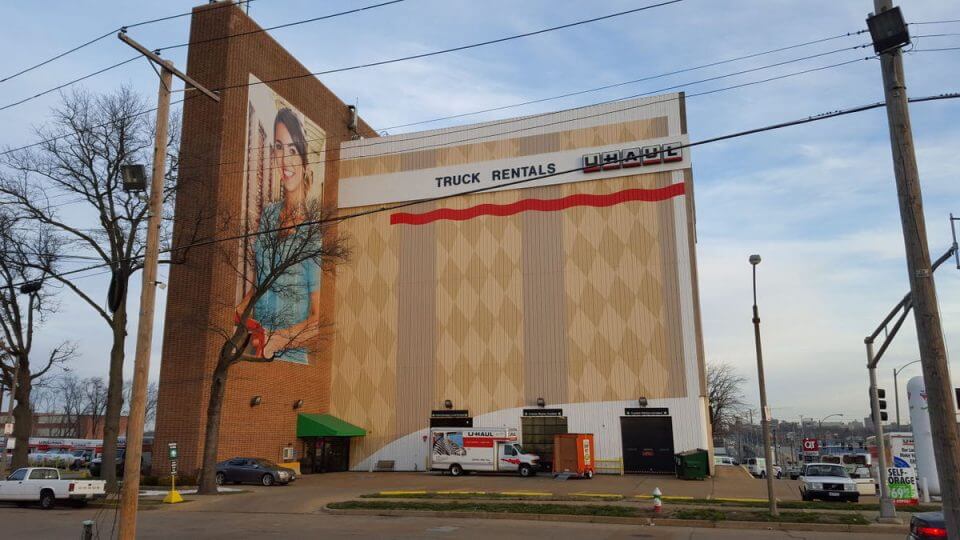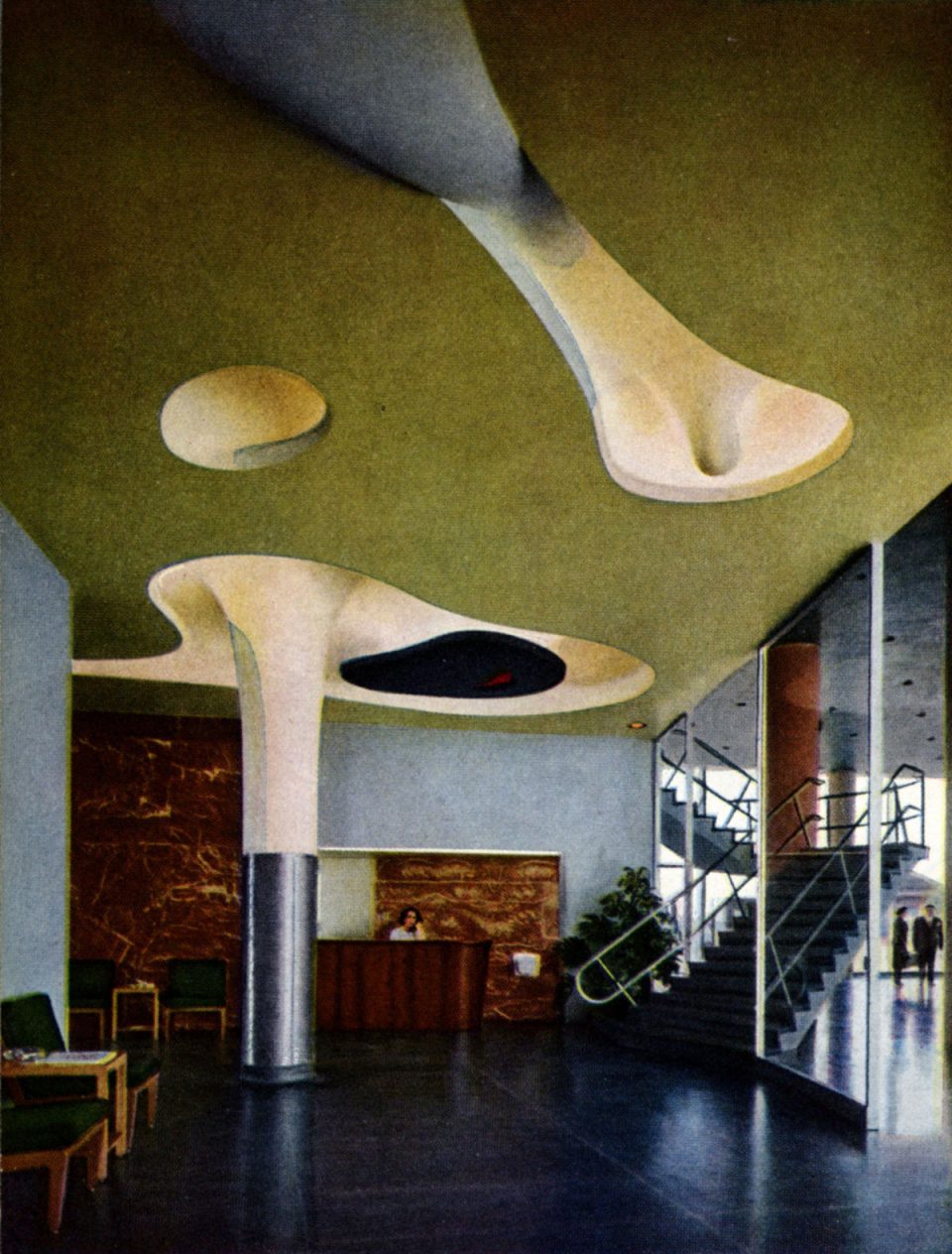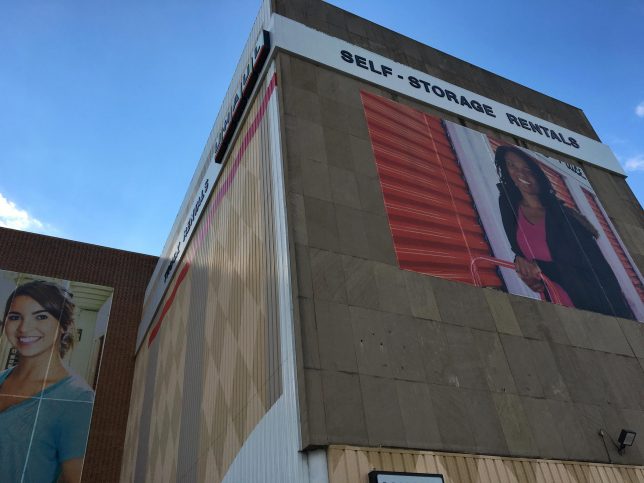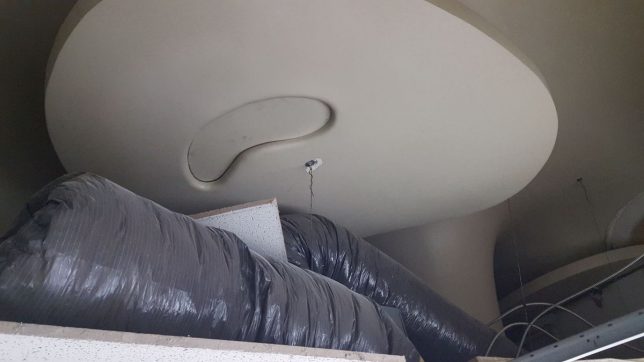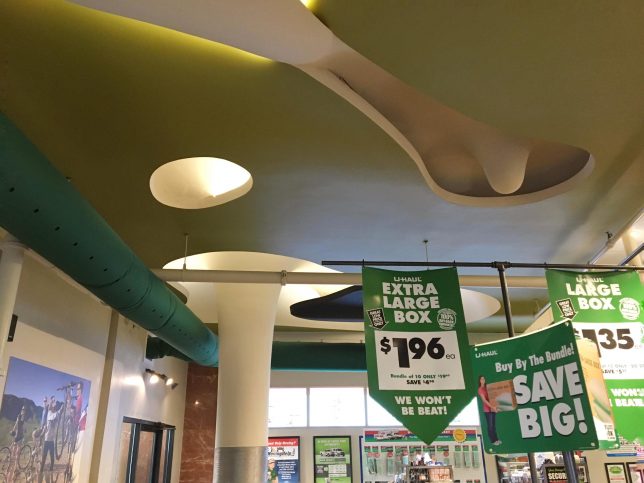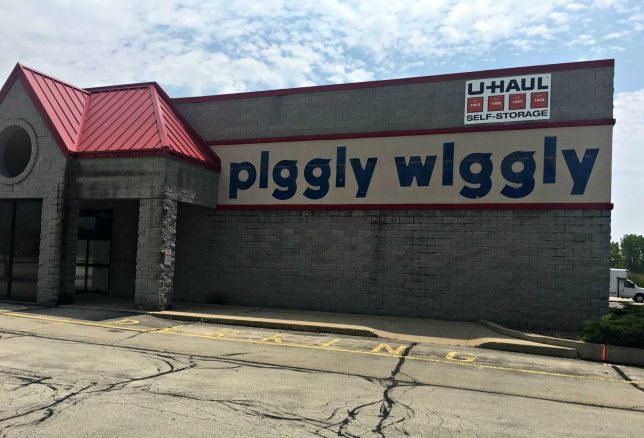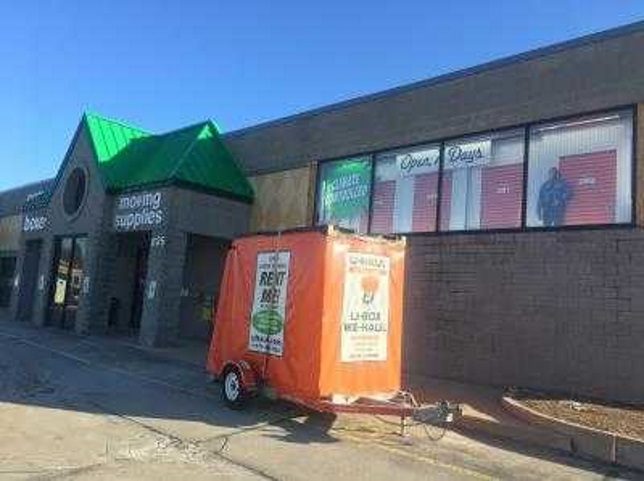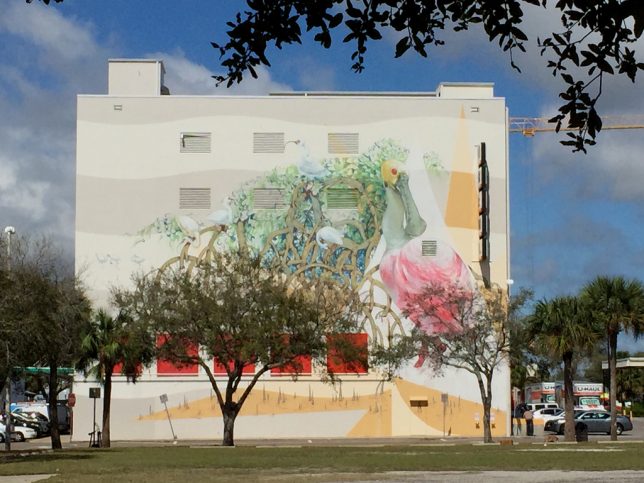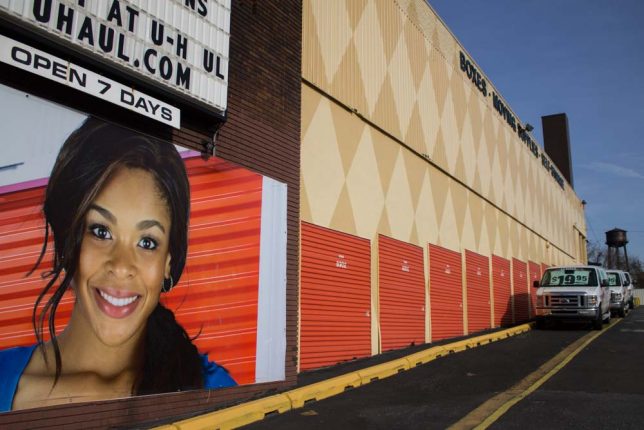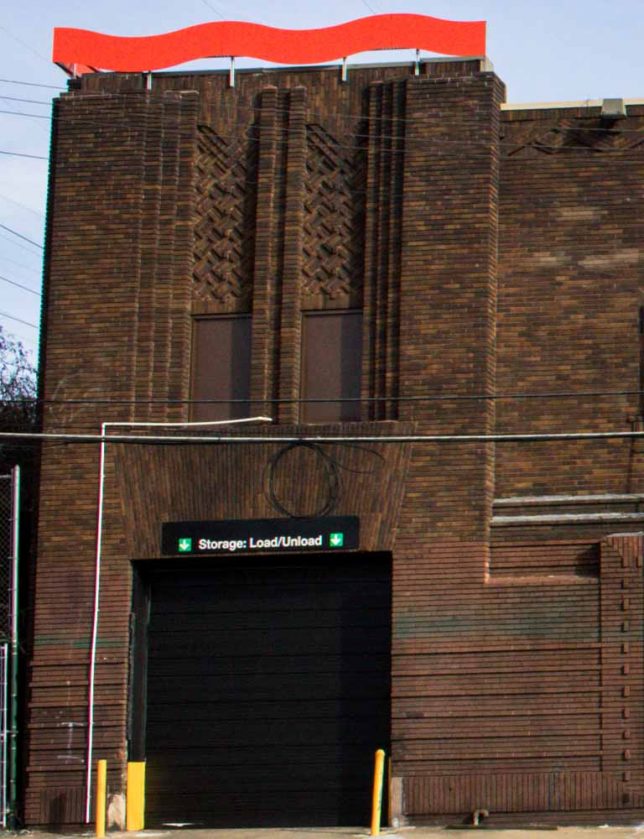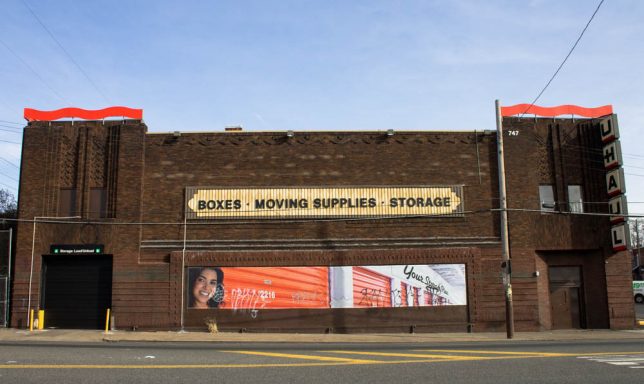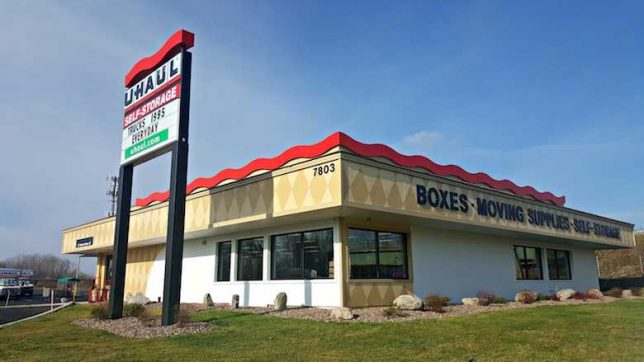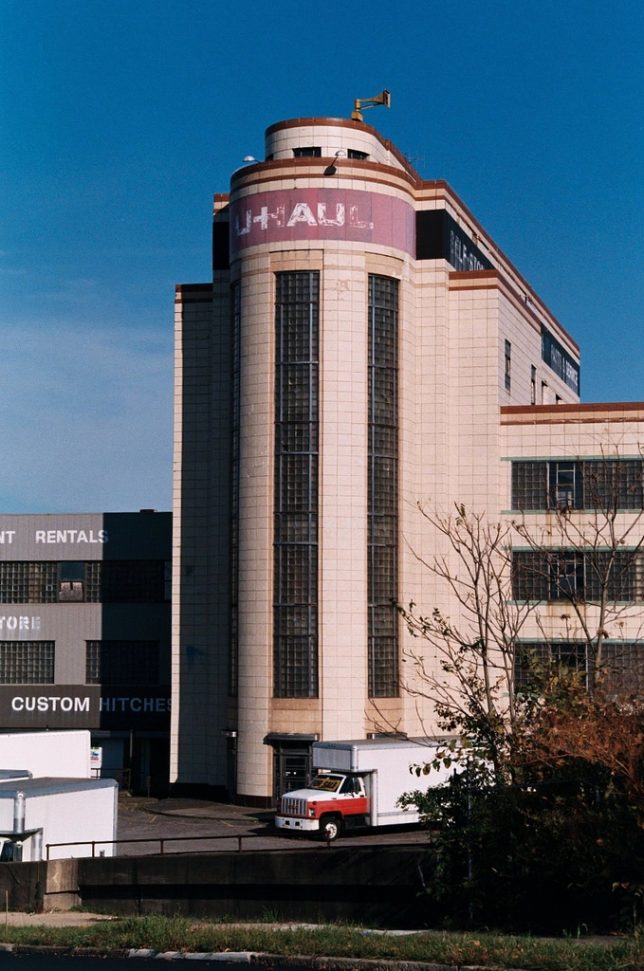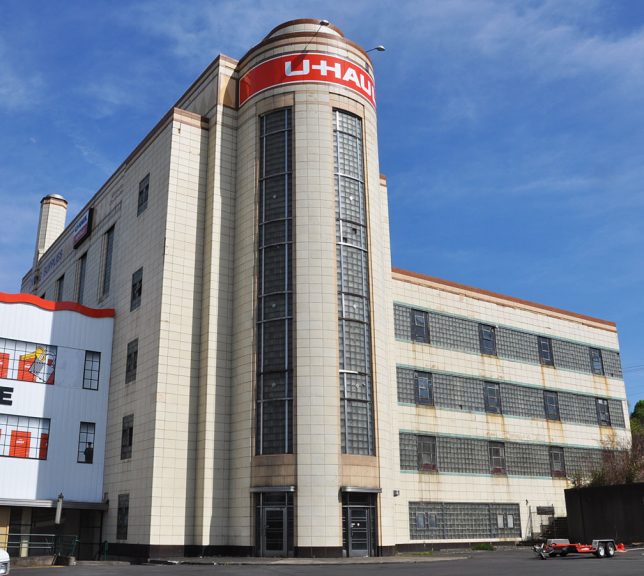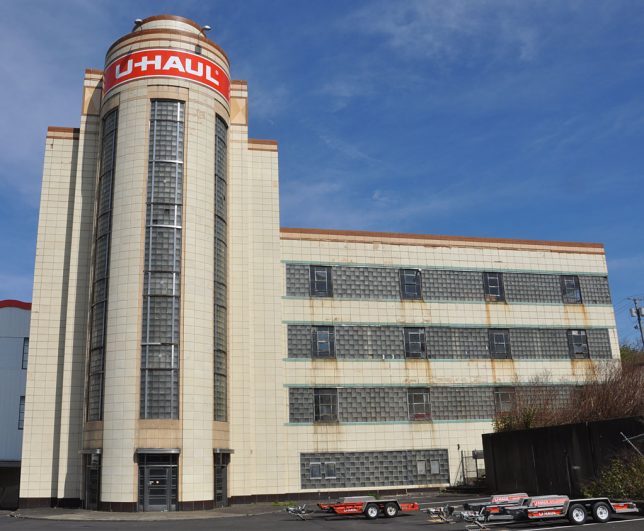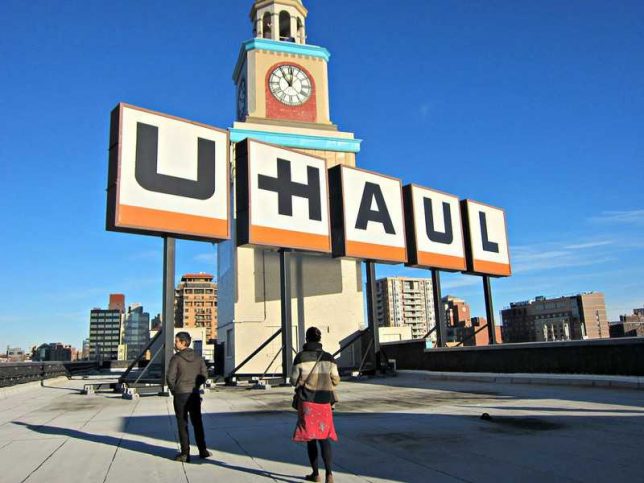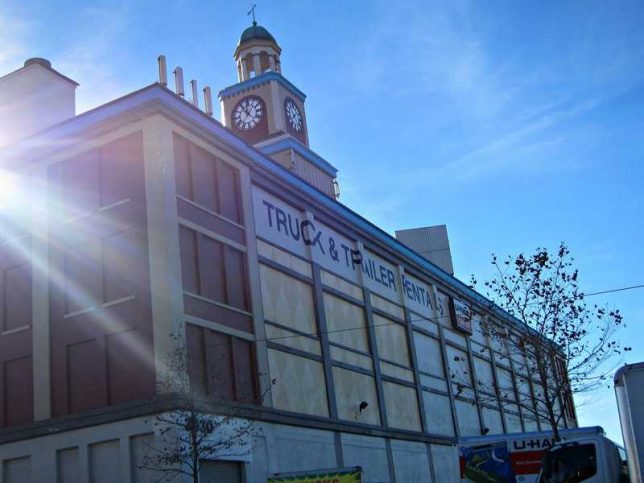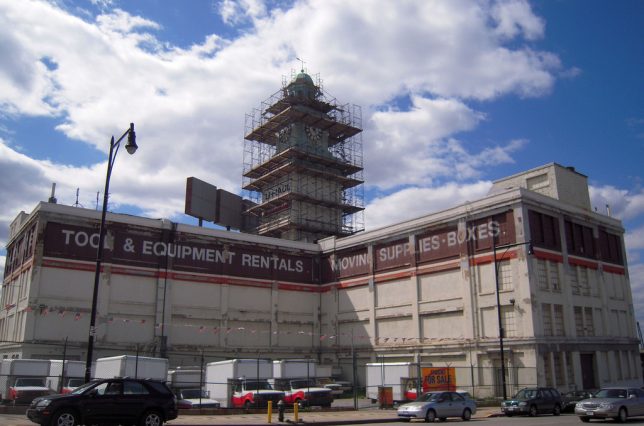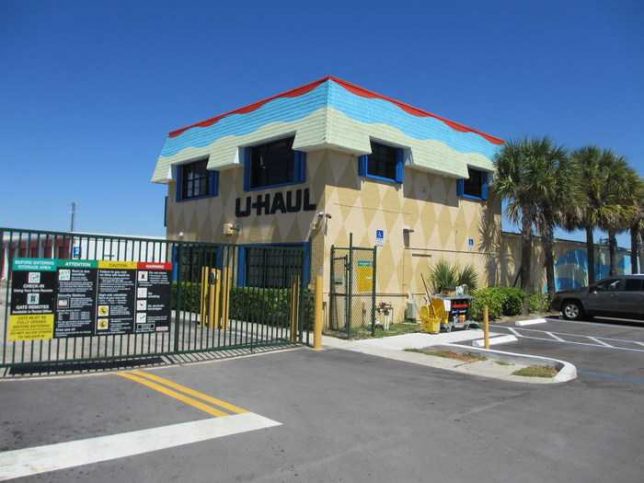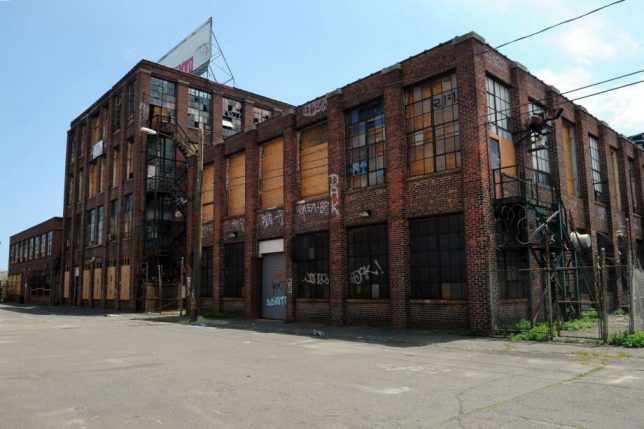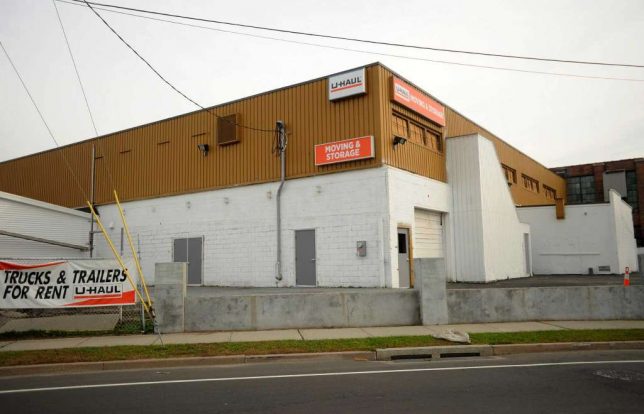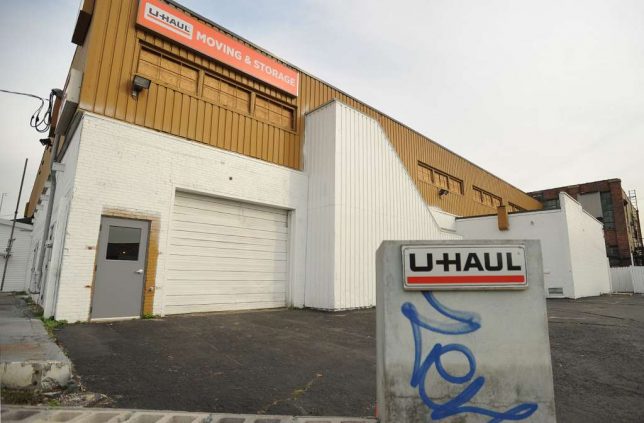U-Haul company’s commitment to renovate and reuse abandoned buildings is not only economical, it also serves to revitalize post-industrial neighborhoods.
One of U-Haul’s most noteworthy adaptive reuse projects is the former Magic Chef head office building in south St. Louis, Missouri. Built in 1947-48 and designed by architect Harris Armstrong, the building’s lobby featured a beautiful sculptured ceiling created by legendary Japanese-American artist Isamu Noguchi.
Magic Chef sold its St. Louis buildings and factories in the late 1950s and the head office building at 1641 South Kingshighway sat abandoned for about a decade before U-Haul bought it in 1977.
A practical renovation in the early 1990s saw a drop ceiling installed beneath Noguchi’s sculptural ceiling but thanks to U-Haul’s current focus on adaptive reuse and respectful regional marketing, both the building and its unique mid-century lobby ceiling are undergoing a well-deserved renaissance.
Shop The Pig
U-Haul’s corporate sustainability initiatives pay off for both the company and the community in a number of ways including lightening the local carbon footprint, reducing consumption of energy and resources on new construction, and helping cities and towns reduce their inventories of unwanted buildings. Saving historic architecture isn’t always a priority, however. This former Fox Brother’s Piggly Wiggly supermarket in Saukville, Wisconsin is a prime example. The defunct grocery store was converted into the U-Haul Moving & Storage of Port Washington full-service moving and self-storage facility over the summer of 2016.
For St. Pete’s Sake
U-Haul doesn’t have to expend the expense required to beautify their adaptively reused buildings but aren’t you glad they do? Take the U-Haul depot above, located in downtown St. Petersburg, Florida. Formerly a drab, dreary, abandoned rail-connected cold storage building, the structure now boasts a gigantic mural of Tampa Bay wetlands fauna and flora on one side highlighted by an artistically rendered Roseate Spoonbill. Flickr user Mark Evans (st_asaph) captured this uplifting urban scene on February 27th of 2017.
U-Haul often shows admirable restraint and respect for history in their adaptive reuse renovations. This former Depression-era truck sales center has been transformed into U-Haul’s North Philadelphia storage facility yet still evokes the neighborhood’s rich architectural heritage.
One drawback to re-purposing abandoned commercial buildings is a single revitalization project doesn’t extend to the surrounding neighborhood – at least not initially. We’re sure residents living on or near the building on West Allegheny Avenue can tolerate a little graffiti now in exchange for a more livable urban milieu down the road.
Move In, Take Out
In 2016 U-Haul converted a former Chinese restaurant in Cicero, New York, into a self-contained showroom. While the 5,053-square-foot building is expansive on its own, the 1.28 acre site offers plenty of room for storing U-Box containers. “People started to stop while we were under construction to say how happy they were to see a property that had become an eyesore turn into something of value,” explains Mike Streeter, president of the U-Haul Co. of North Central New York. “When we officially opened, several customers even asked if we would have Chinese takeout. It made for a good laugh.”
Still Cool After All These Years
The former Isaly Dairy plant (home of the Klondike Bar, yum!) in Youngstown, Ohio was designed by Charles F. Owsley in the 1930s. U-Haul bought the then-abandoned building in the 1970s and by the looks of Flickr user Todd Dillon‘s photos taken in late 2010, the company hasn’t done as much to the structure’s exterior compared to other locations.
Then again, that’s just as well – this imposing yet eminently pleasing example of Art Deco architecture stands on its own, slightly deteriorated though it might appear, and U-Haul was wise to limit their recently touched-up branding to a tasteful minimum.
What’s up, Doc Brown? The former W. J. Sloane Furniture Co. in Flushing, Queens, New York was built in 1925 and its signature feature was its soaring clock tower. When U-Haul took over the moldering structure in 1979, a general renovation left out the inner workings of the clock mechanism made by the Seth Thomas Clock Company of Connecticut.
It wasn’t until 2014 that U-Haul turned their attention to restoring the clock, the hands of which had been frozen at 11am (or11pm) for decades. “As part of U-Haul’s sustainability efforts, we prefer to reuse existing buildings and preserve as many of the historical aspects of the building as possible,” stated Will Wolff III, Marketing Company President of the U-Haul Company of Brooklyn/Queens/Staten Island.
“While the clock doesn’t necessarily serve a purpose at the location directly, our operation does serve the community. Having the clock running is a benefit to the community more than anything.” Awesome, dude, just awesome.
Upping The Ypsilanti
North Huron Street Storage in Ypsilanti, Michigan recently partnered with U-Haul to add truck and trailer rentals to their original storage-only resume. We have to assume U-Haul sprung for the appealing exterior renovation job at NHSS’s N. Huron St. location because man, it sure looks great.
Water Under the Bridgeport
U-Haul purchased the former Bridgeport Metal Goods building at 365 Cherry St. in Bridgeport, Connecticut in 2014 and city authorities couldn’t wait for U-Haul to renovate the highly visible (and highly deteriorated) century-old abandoned building.
“This facility is located in an area of town that has been in decline for many years,” according to U-Haul official Patrick Keefe. “U-Haul is the first of many businesses helping to revitalize the area and bring it back to its former condition.” Making America great again? Slogans are cool and all but it’s good to see a big corporation like U-Haul putting their money where their mouth is.

